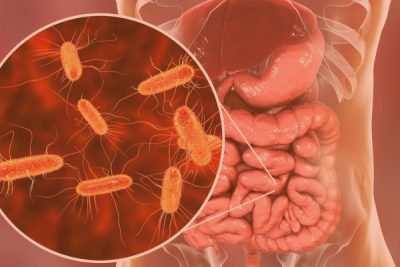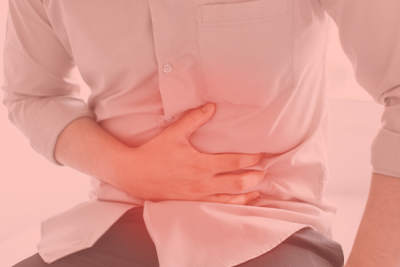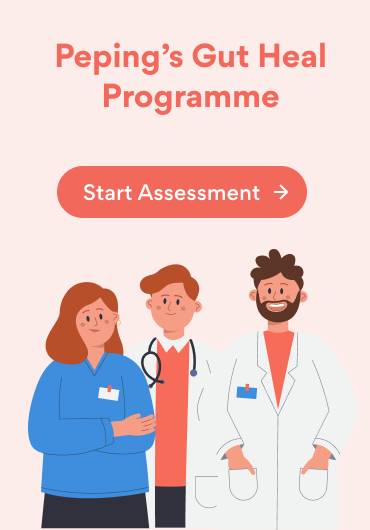The gut microbiome refers to a collection of microorganisms including bacteria, viruses, and fungi that reside in the gastrointestinal (GI) or digestive tract.
In a study published in 2018, researchers asked 706 type 1 diabetes patients, and 604 non-diabetic individuals, questions about their GI symptoms and quality of life. They found that lower GI symptoms, such as diarrhea, constipation, abdominal bloating and pain, floating stools, and intestinal gas were more common among diabetic individuals. In particular, constipation and diarrhea were twice as likely among diabetes patients.
What is the link between diabetes and the gut? Let’s find out.
An introduction to diabetes
The pancreas generates insulin, a hormone that helps control carbohydrate metabolism in the body by directing cells to take in glucose from the circulation. Diabetes develops when the pancreas does not generate enough insulin or when cells in the body do not respond properly to insulin.
There are three main types as follows:
- In type 1 diabetes, the pancreas produces little or no insulin. It often occurs in children and is a form of autoimmune dysfunction.
- Type 2 diabetes more frequently in adults older than 40 years of age and involves insulin resistance, which means that the body does not respond to and metabolize insulin effectively.
- Gestational diabetes develops only in women who did not previously have diabetes but developed high blood sugar levels while pregnant.
Diabetes symptoms and diagnosis
Individuals with diabetes may present with the following symptoms:
- Extreme thirst
- Frequent urination
- Increased appetite
- Fatigue or exhaustion
- Dry skin
- Changes in vision (such as blurred vision)
Diabetes can also result in unexplained weight loss or gain, slow-healing injuries, frequent illness or infections (especially yeast infections), and numbness or pain in the hands or feet. Long-term complications include cardiovascular disease, renal disease, loss of vision, and lower limb amputation.
Diabetes is diagnosed based on glycated hemoglobin (HbA1c) levels and fasting blood glucose levels.
Diabetes, insulin sensitivity, and the gut microbiome
Any change in the gut microbiota can shift the host metabolism towards increased energy harvest during obesity and diabetes. Gut microbes can alter glucose metabolism pathways. Certain species of gut bacteria such as A. muciniphila can affect gut permeability, and increased gut permeability is often observed among type 2 diabetes patients.
A study published in 2019 reported that an imbalance in the composition of the gut microbiome (dysbiosis) may contribute to the development of type 2 diabetes.
Studies have also found that people who don’t process insulin properly have lower levels of a certain type of bacteria that produces a type of fatty acid called butyrate. Butyrate and other short-chain fatty acids (SCFA) exert profound immunometabolic effects.
Butyrate-producing bacteria such as Faecalibacterium prausnitzii and Roseburia intestinalis abundances were lower among type 2 diabetes patients, compromising intestinal barrier integrity, and increasing inflammatory activity. Specific members of the microbiota such as Akkermansia muciniphila might be decreased in diabetes and when administered to murine animals exerted antidiabetic effects.
A study published in the journal Diabetes reported that individuals with higher levels of Coprococcus bacterium tended to have higher insulin sensitivity, while those whose microbiomes had higher levels of the bacterium Flavonifractor tended to have lower insulin sensitivity.
The PREDICT 1 (Personalized Responses to Dietary Composition Trial 1) study analyzed data on the composition of participants’ microbiomes, their diets, and cardiometabolic biomarkers. The researchers found evidence that a microbiome rich in Prevotella copri and Blastocystis species was associated with maintaining favorable blood sugar levels after meals.
A study published in PNAS reported that the presence of the Parabacteroides distasonis bacterium in the gut causes type 1 diabetes in a murine model and could predict the onset of diabetes among humans. This is likely because the microbe produces a peptide similar to part of an insulin molecule.
Common Gastrointestinal Issues and Diabetes
Diabetic Autonomic Neuropathy
Diabetes is the most prevalent cause of autonomic neuropathy, a dangerous illness. Diabetic autonomic neuropathy is caused by peripheral nerve dysfunction and affects various sections of the body, including the gastrointestinal tract. It frequently worsens with time and can be deadly.
Diabetes-related autonomic neuropathy frequently affects the respiratory system, cardiovascular system, neurological system, and other organs.
Enteropathy, or when neuropathy affects the enteric nervous system (the nervous system of the gut) could create a breeding ground for bad/harmful bacteria and give rise to GI symptoms such as diarrhea, constipation, esophageal dysmotility, fecal incontinence, and abdominal pain.
Since there are no medications that can successfully reverse the development, prevention is critical. The most effective strategy to avoid diabetic autonomic neuropathy is to keep your blood glucose levels under control.
Diabetes and Gastroparesis
Diabetes is the most common cause of gastroparesis, a GI condition in which food remains in the stomach for too long (delayed gastric emptying), rather than passing into the small intestine when it should.
Diabetes-related high blood sugar levels can cause chemical changes in the vagus nerve, which connects the GI tract to the brainstem. This impairs the vagus nerve’s capacity to deliver impulses to the stomach muscles, causing them to empty the stomach.
Diabetic gastroparesis is an especially dangerous form of gastroparesis since delayed gastric emptying can lead to periods of very high or very low blood sugar, continuing to worsen the vagus nerve damage.
Feeling full after eating small amounts of food, stomach bloating or discomfort after a meal, upper stomach pain, nausea, vomiting, poor appetite, and heartburn are all signs of gastroparesis. The failure of gastroparesis patients to eat sufficiently can result in consequences such as vitamin shortages, anemia, weariness, and weight loss. Excessive vomiting may result in serious dehydration.
Diabetes and Non-alcoholic Fatty Liver Disease (NAFLD)
NAFLD is characterized by the buildup of fat cells in the liver of individuals who drink little or no alcohol. It looks a lot like liver damage seen in people with alcoholism. You are at risk for it if you have diabetes or obesity.
Diabetes management will be difficult if you have non-alcoholic fatty liver disease. This is because the more fat in your liver, the more difficult it is for your body to utilize and react to insulin.
The majority of people with this illness have no symptoms. If you do, you may have fatigue or soreness in the right upper part of your stomach. The first indicator is generally an increase in blood test, which tests your liver function.
Non-alcoholic fatty liver disease has no particular therapy. However, your doctor may advise you to keep your blood sugar under control and to lose weight. They may also recommend medicine to help your body use insulin more effectively.
Pancreatitis and Diabetes
The pancreas is the organ in charge of insulin production. In some people with pancreatitis, the damage caused by inflammation might impair the pancreas’ capacity to make insulin, resulting in diabetes. According to one study, those who had acute pancreatitis had a far higher likelihood of acquiring diabetes (23%) than the general population (4-9%).
Celiac Disease and Type 1 Diabetes
While the specific cause is unknown, some study has suggested that people with celiac disease are more likely than the general population to acquire type 1 diabetes. According to a 2015 research, type 1 diabetes afflicted just 0.4% of control people but 3.2% of celiac disease patients.
Other gastrointestinal diseases that are more common among diabetic individuals include the following:
- Hepatitis C (infection of the liver)
- Hemochromatosis (iron buildup that leads to liver damage)
- Cirrhosis (scarring of the liver)
- Small intestinal bacterial overgrowth (SIBO)
Diabetes Medications
Metformin revolutionized type 2 diabetes treatment and is the most widely used oral diabetes medication. However, metformin has some notable GI side effects, including fecal urgency, diarrhea, abdominal pain, and nausea.
The symptoms usually go away when the individual responds to the drug, although diarrhea might linger for a long period in some circumstances. On the plus side, metformin has been demonstrated to offer other advantages such as correcting fatty liver disease, treating erectile dysfunction, and decreasing cholesterol.
Food Choices of Diabetics and Gut Health
Many diabetics prefer to consume artificially sweetened snacks over ones containing sugar. It is crucial to remember, however, that a certain form of artificial sweetener known as sugar alcohol can induce diarrhea. These include sorbitol, erythritol, xylitol, and maltitol; in general, avoid consuming significant amounts of items with components ending in “itol” to avoid diarrhea.
Ways to improve gut health if you have diabetes
- Eat more fiber-rich, plant-origin foods. Plants contain fiber, which is essentially the food that good bacteria use to grow. You can find these unique fibers in foods such as beans, asparagus, oats, cauliflower, onions, garlic, yams, chicory, and cashews.
- Focus on unsaturated fat. Replacing saturated fat with unsaturated fat may protect against unhealthful gut microbes that contribute to insulin resistance and are also good for the heart. Saturated fats (such as lamb, beef, pork, cheese, coconut oil, cream, and butter) promote the absorption of endotoxins from the gut. In the blood, endotoxin interacts with cells to create inflammation that can damage insulin receptors, and enhance insulin resistance. Sources of unsaturated fat include seeds, nuts, seeds, olives, avocados, vegetable oils, and tahini.
- Engage in regular physical exercise. Physical activity may help increase the abundance of good bacteria. Exercise makes the gut muscles stronger and better equipped to speed up digestion and remove bad bacteria from the body. Staying active can lower inflammation which may contribute to insulin resistance.
- Increase polyphenol intake. Nuts (such as walnuts), vegetables, fruits, seeds (such as flaxseeds), whole grains, tea, coffee, and dark chocolate contain potent disease-preventing substances called polyphenols, a source of food for good bacteria.
- Limit intake of sugar, artificial sweeteners, processed foods and antibiotics
- Reduce stress levels
Final thoughts
Diabetes, as you are surely aware, increases your risk of health concerns such as heart disease and obesity, but it may also create difficulties in your stomach and other sections of your digestive tract. Uncontrolled blood sugar can cause nerve injury, including nerve damage in the stomach and intestines.
Diabetes and gut microbiota have a bidirectional interaction. Diabetes impacts the stomach by interfering with the regulation of gut hormones, which are important in glucose tolerance and glycemic management. Diabetes can cause gut dysbiosis, which is characterized by a low number of commensal butyrate makers and has a detrimental impact on gut permeability.
Microbes in the gut influence glucose metabolism and insulin sensitivity. Diabetes is connected with reduced short-chain fatty acid levels and epithelial barrier disruption, which leads to systemic inflammation and insulin resistance.
If you are having atypical gastrointestinal symptoms, you must consult with your healthcare team to determine the reason and work on treatment options.
Targeting the gut microbiota is being developed as a novel therapeutic strategy for diabetes.













